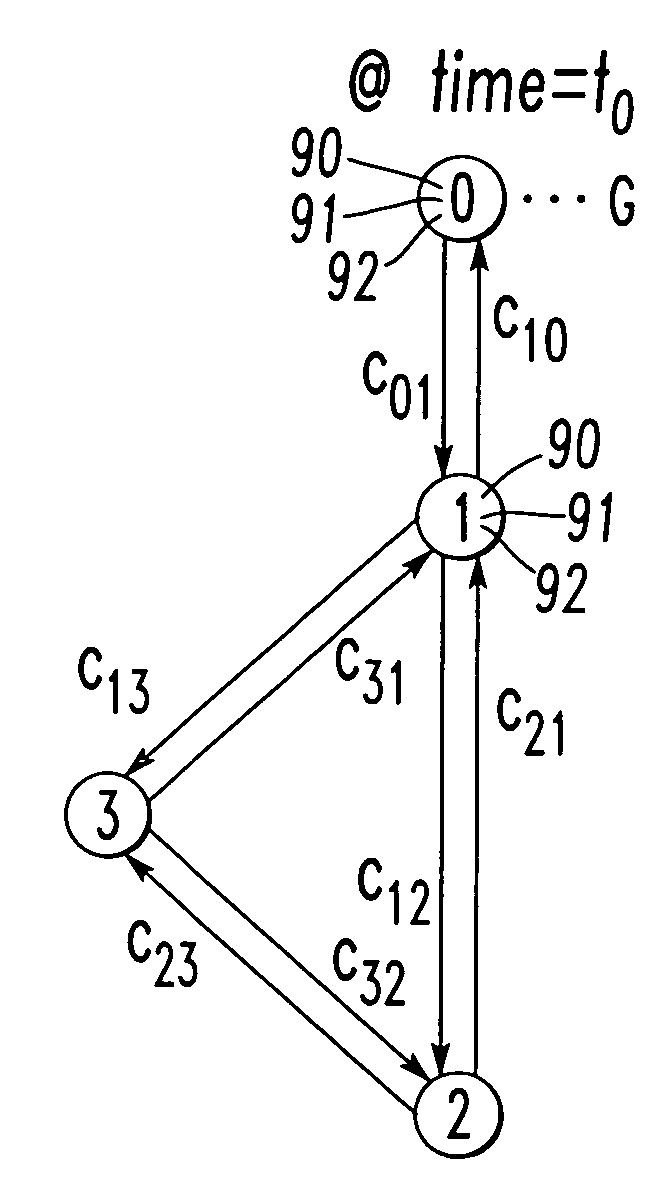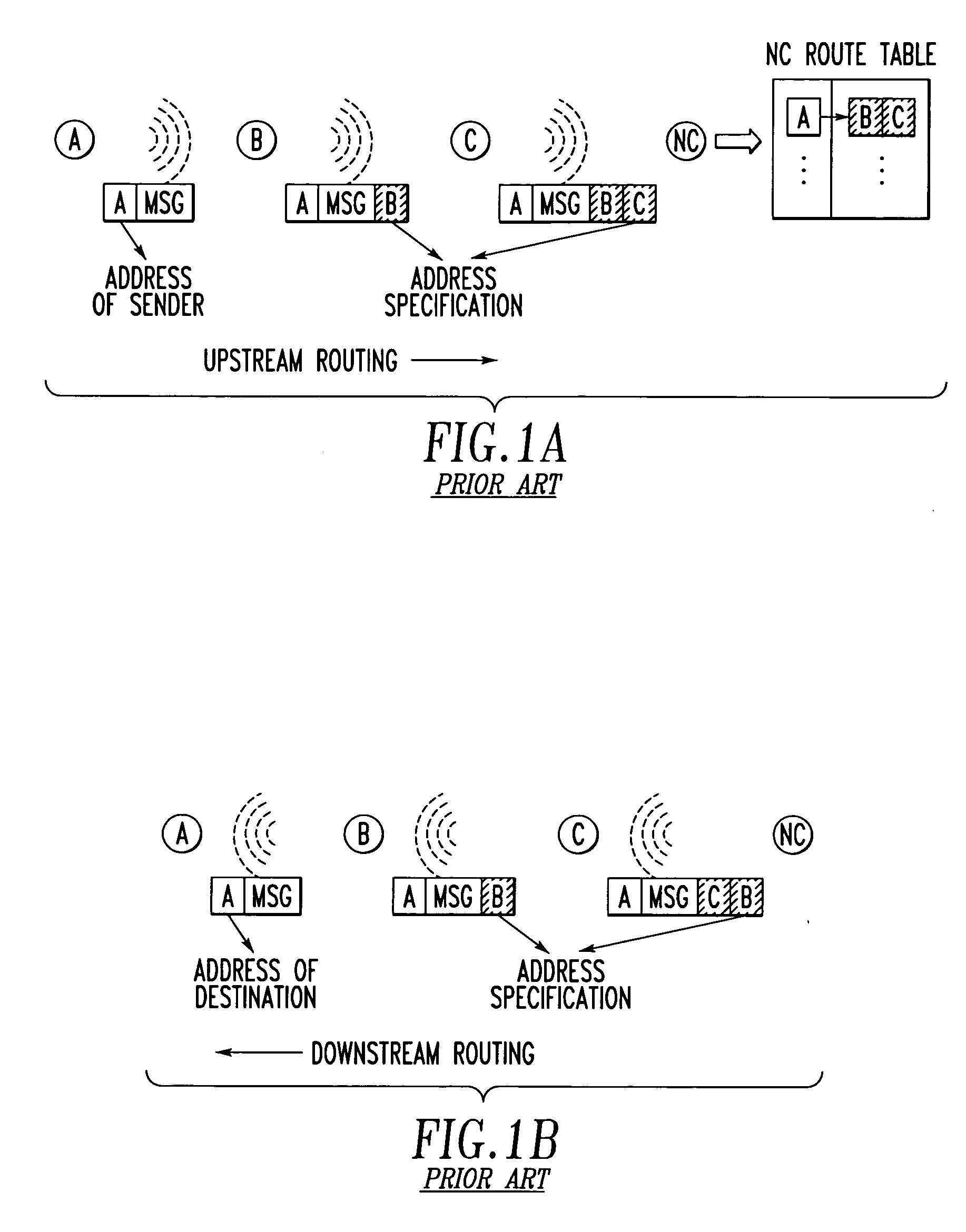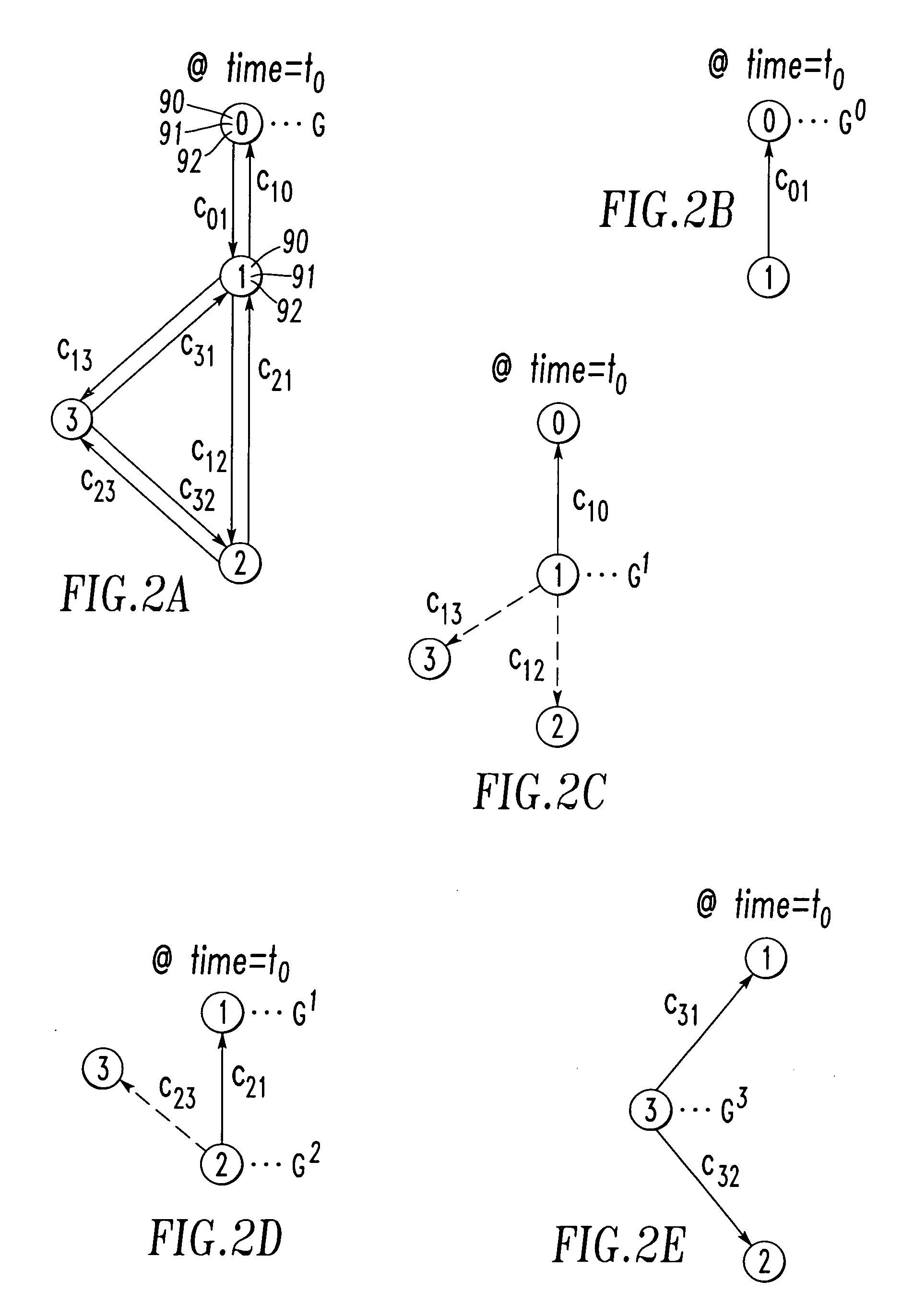Ad-hoc network and method employing globally optimized routes for packets
- Summary
- Abstract
- Description
- Claims
- Application Information
AI Technical Summary
Benefits of technology
Problems solved by technology
Method used
Image
Examples
Embodiment Construction
[0041] As employed herein, the term “wireless” shall expressly include, but not be limited by, radio frequency (RF), light, visible light, infrared, IrDA, ultrasound, wireless area networks, IEEE. 802.11 (e.g., 802.11 a; 802.11 b; 802.11 g), IEEE 802.15 (e.g., 802.15.1; 802.15.3, 802.15.4), other wireless communication standards (e.g., without limitation, ZigBee™ Alliance standard), DECT, PWT, pager, PCS, Wi-Fi, Bluetooth™, and cellular.
[0042] As employed herein, the term “portable communicating device” shall expressly include, but not be limited to, any portable communicating device having a wireless communication port (e.g., a handheld device; a handheld personal computer (PC); a portable or laptop PC; a Personal Digital Assistant (PDA); a mobile or cellular telephone; a wireless Internet device; a protocol-enabled telephone; a portable wireless device).
[0043] As employed herein, the term “network coordinator” (NC) shall expressly include, but not be limited to, any communicatin...
PUM
 Login to View More
Login to View More Abstract
Description
Claims
Application Information
 Login to View More
Login to View More - R&D
- Intellectual Property
- Life Sciences
- Materials
- Tech Scout
- Unparalleled Data Quality
- Higher Quality Content
- 60% Fewer Hallucinations
Browse by: Latest US Patents, China's latest patents, Technical Efficacy Thesaurus, Application Domain, Technology Topic, Popular Technical Reports.
© 2025 PatSnap. All rights reserved.Legal|Privacy policy|Modern Slavery Act Transparency Statement|Sitemap|About US| Contact US: help@patsnap.com



